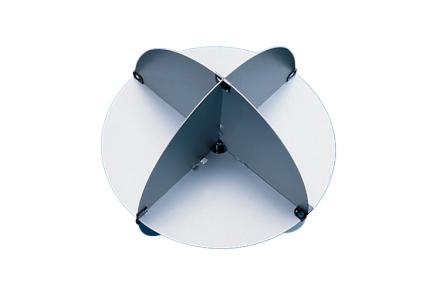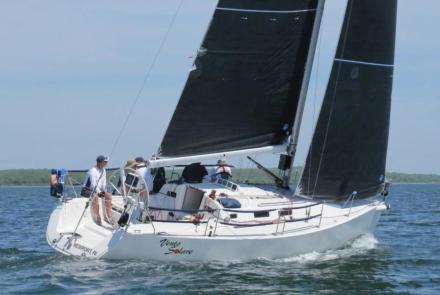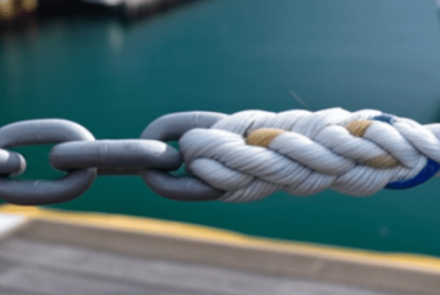Sydney-Hobart Incidents Review
2024 Rolex Sydney Hobart Yacht Race Review
“Safety Moments, presented at CCA Stations and Posts”
By Chuck Hawley, San Francisco
CCA members work to increase their knowledge of safety and seamanship in many ways. For example, the CCA is a strong supporter of US Sailing’s Safety at Sea courses, held frequently in Bristol, RI. The CCA has an extensive library of articles available online, on dozens of topics regarding going to sea safely. The club promotes cruises, both by individual crewed vessels, and as fleets of vessels. And the members frequently write and publish books on the subject of seamanship which are technically excellent, including (and certainly not limited to) John Rousmaniere’s books Fastnet Force 10 and The Annapolis Book of Seamanship, Ralph Naranjo’s The Art of Seamanship, and the CCA’s own Desirable and Undesirable Characteristics of Offshore Yachts, written by members of the CCA Technical Committee and edited by John Rousmaniere.
Few would argue that simply “miles at sea” is one of the best ways to increase one’s skills, especially when sailing on a well-run vessel with a good crew. But even the best equipped and best run vessels get into trouble, sometimes leading to the loss of the vessel, or worse yet, loss of life. When this happens, as it did in the Fastnet Race in 1979, or the Newport Bermuda Race in 2024, or the Rolex Sydney Hobart Yacht Race (RSHYC) in 2024, there is a tradition of writing up the facts surrounding the incident so that the sailing community can learn from what happened, what went wrong, and the recommendations to reduce similar losses in the future.
Recently, the Review Committee Report of the RSHYC was published, and it should be required reading of every skipper, watch captain, navigator, boat captain, and onboard medical expert[1] who races or cruises long distances. It was written by a trio of extremely experienced sailors:
Rear Admiral Chris Oxenbould[2], AO, RAN, and former Chair of the Australia Sailing’s National Safety Committee
Adrienne Calahan OAM, veteran of 32 Sydney Hobart races, ocean navigator and maritime attorney
Dave Jordan CSC, commander of a variety of Royal Australian Navy ships, Race Committee Chairman of the RSHYC for two years and a Race Committee member for 12 years
The purpose of this Safety Moment is not to try to summarize the 50 page+ report[3], but rather to strongly encourage you to read it on your own. The authors are extremely accomplished writers, and the report is well-organized. The report starts by summarizing the start of the race, and the rapid deterioration of the conditions. While many of the 104 vessels that started suffered damage and many retired, the report focuses on three vessels: Flying Fish Arctos, Bowline, and Porco Rosso.
The Sydney Hobart Race is known for having heavy winds, and 2024 race was no exception, due to both the wind strength and the large change in wind direction about 12-24 hours after the start, from NE to W-SW to S-SW. This caused an extremely taxing sea state for the helmsmen, while they attempted sailing as directly downwind as possible. Thus, the opportunity for an accidental (flying) gybe was very high. There was no moon initially, and only an obscured sliver when it rose at 0225.
Flying Fish Arctos
Around 2330, sailing downwind in winds from 30-40kts, Flying Fish Arctos suffered a flying gybe, causing one of the crewmembers to be thrown against the lifelines, likely due to being struck by a second crewmember who had been hit by the boom. Both men received medical care, but the crewman with the head injury did not regain consciousness despite the excellent medical expertise onboard. Flying Fish Arctos retired to Jervis Bay and was met by EMS.
Bowline
Bowline also reported a flying gybe, causing “the most experienced sailor onboard” to be flung against a cockpit winch and pinned after being struck by the mainsheet, with fatal consequences. He was taken below, given CPR, but it was apparent to those giving him treatment that he had been killed by the impact. Bowline retired from the race and put in at Batemans Bay.
Porco Rosso
Around 0300, while Porco Rosso was sailing on a starboard reach, she was hit by a large wave which knocked the helmsman off his feet, causing him to lose control and resulting in a round down/crash gybe. As Porco Rosso has a canting keel, this resulted in the keel being on the wrong side of the boat, and an extreme angle of heel. The crew did a head count to make sure that everyone was on board, but the report notes that they did not “count off”, a procedure where all crewmembers respond, in order, with their assigned number. As a result, the head count was inaccurate by one crewmember, who had gone over the side during the keel-induced steep angle of heel.
Shortly thereafter, the navigator noticed that there was a MOB alarm from a Personal AIS Beacon (sometimes referred to as a PAB) which was thought to be inadvertently activated as a result of the gybe. Race Operations then called Porco Rosso advising them of a MOB alarm activation, which they reported as an accidental activation.
“The navigator then detected an AIS MOB alert on the Expedition Routing Software” according to the report, which he determined was likely to be from one of the crewmembers. Race Operations contacted them again, this time with the message that a PLB (personal locator beacon) signal had also been detected in their vicinity. At that point, it was determined that one of their crewmembers was overboard, based on the MMSI number transmitted by the beacon. They had a “real” MOB event.
When the crewmember had been washed overboard, he released his tether from his harness using a Harness Release System because he was being held underwater by his position relative to the lifelines. This allowed him to float free of the vessel, having to rely on his beacons and inflatable lifejacket. The details about the MOB’s experience in the water, and the challenges of finding someone who is two miles away on a very dark night, are as frightening as they are fascinating. This incident is one of the strongest arguments for everyone to carry a PAB and possibly a PLB or a combined product when sailing at night. The crewmember was recovered successfully about 40 minutes after the initial incident.
Areas of Special Interest
The Terms of Reference tasked the committee to consider the following:
- Equipment, including helmets and boom brakes/preventers
- Relevance of the crew experience and training requirements
- Risks of sailing downwind in strong conditions.
The Review Committee added some additional topics to their report after interviewing the crews and observing how different gear or techniques might have affected the outcomes of the incidents. These included:
- AIS MOB beacons
- Harness Release Systems
- Communications
The Review Committee describes the challenges of answering some of these questions in a very balanced away:
- How do you teach someone to drive downwind in 35kts in a safety at sea course?
- How do you design a helmet that can withstand the impact of a swinging boom?
- How do you weigh the dangers of a possible accidental release versus the benefits of a harness release system?
One consistent message in the report is that the participants felt that the weather briefing and the weather forecasts were very accurate. They knew what to expect, and frequently reduced sail area or flew more conservative sails due to the anticipation of increasing wind strengths. Many vessels retired before being in extremis to avoid damage to their vessels or injury to their crew.
As someone who has had the pleasure of working with RADM Chris Oxenbould on two other incidents reports, along with CCA member Stan Honey, I strongly recommend that members read this report while appreciating the amount of work that went into writing it. Like the CCA’s recent excellent reports on the 2024 Newport Bermuda Race sinkings and vessel structural problems, well-written incident reports are an excellent way to improve one’s safety at sea knowledge.
The Cruising Club of America is a collection of accomplished ocean sailors having extensive boat handling, seamanship, and command experience honed over many years. “Safety Moments” are written by the Club’s Safety Officers from CCA Stations across North America and Bermuda, as well as CCA members at large. They are published by the CCA Safety and Seamanship Committee and are intended to advance seamanship and safety by highlighting new technologies, suggestions for safe operation and reports of maritime disasters around the world.
[1] I hesitate to use the word “expert”, but this could be someone with professional medical training, or at the very least, the “designee” who is responsible for the assessment and treatment of individuals during the voyage.
[2] Chris Oxenbould also chaired the review panel with CCA members Stan Honey and Chuck Hawley when they investigated the grounding of Vestas Wind, and the collision involving Vestas 11th Hour Racing.
[3] The report is widely available online, and can be easily found by searching for “RSHYR Report 2024”.




